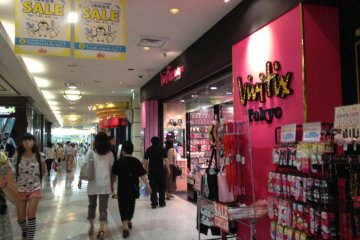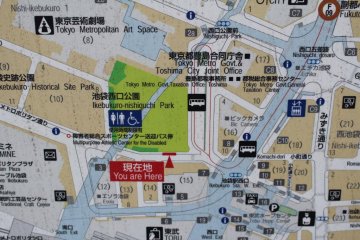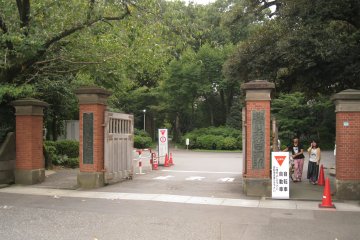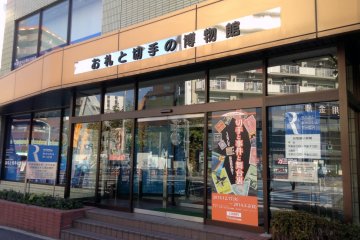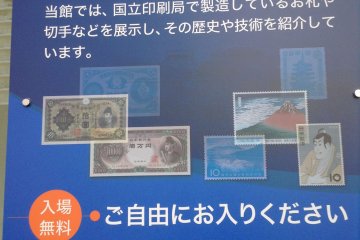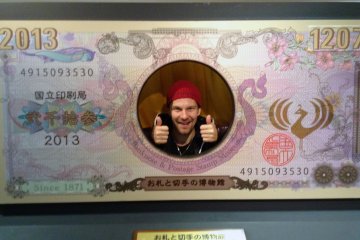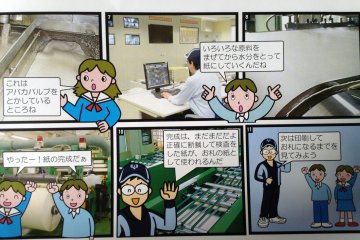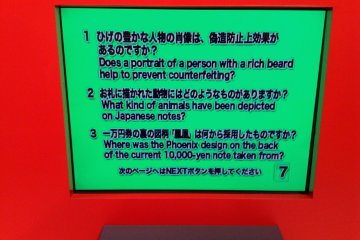Steps away from Oji station in Tokyo lies a small museum right alongside a busy main street. While its walls are full of paper products, it is not the area's Paper Museum which is located inside a park about a ten minutes' walk away. I am talking about the Banknote and Postage Stamp Museum. The area around the nearby station is rather nice, featuring a park with a large playground, some scenic strolls, and small shopping and entertainment venues here and there. The Banknote and Postage Stamp Museum originally attracted my attention because it was in the Oji area which I was exploring and admission is free. With literally nothing to lose, I stepped inside to check the place out.
A friendly museum staff member greets you, hands you some brochures (all Japanese) and reminds you there is no photography or video allowed on the premises with the exception of the experience corner. In order to have my photo memories taken care of, the latter was my first stop. The experience corner is interactive and directed towards kids or families, but that doesn't mean I didn't enjoy it. Finally I was able to figure out my height and weight equivalent to stacked yen notes! Wow, now I will never have to wonder about that again. More impressive is an oversized yen note so big that you put your face in the center for a perfect photo opportunity. Lastly, a computer monitor quizzes you in Japanese and English about either Japanese stamps or various banknote history.
The rest of the first floor is dedicated to models of printing machines and introducing various kinds of currency security counter measures. Most visitors wouldn't spend more than fifteen minutes on the first floor, maybe as little as five.
Climb the stairs to the second floor and you enter the gallery. The National Printing Bureau which started itself back in 1871 was given the responsibility to produce and regulate postage stamps and paper currency. As such, you can trace the history of banknotes and stamps through history with a few cases showing more unique currency samples from around the world.
I ended up spending just fifteen minutes in the museum, but again: it was free. For those interested in learning more, the English or Japanese website should be your first stop. This was nice addition to an outing and I found the looks of some of the paper products fascinating. Surely, you will find one or two interesting things when you look a little closer at what's inside your wallet and on your letters.



